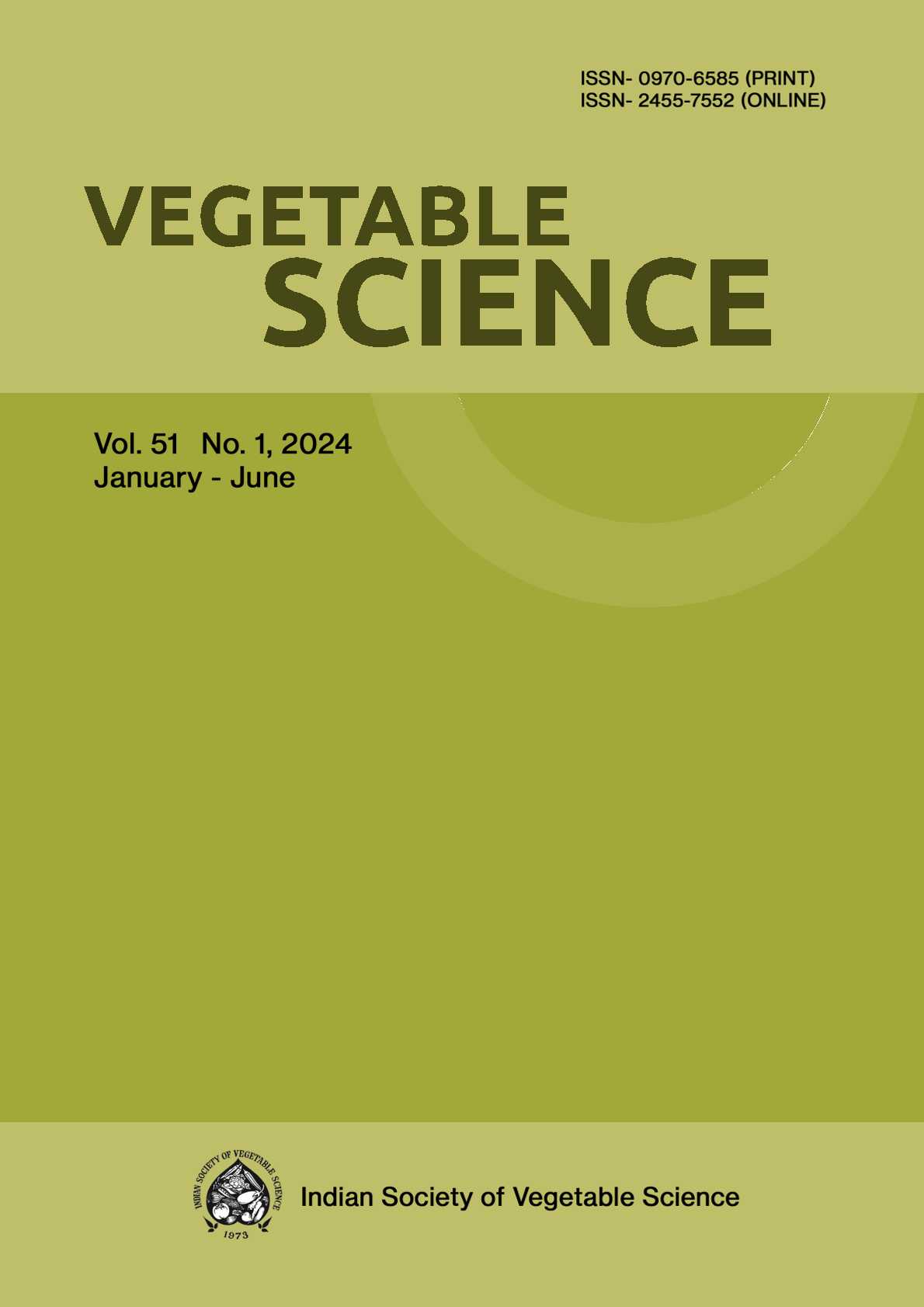Unravelling the crossability behavior between cultivated okra (Abelmoschus esculentus) and Kasturi okra (Abelmoschus moschatus): Occurrence of somatoplastic and hybrid sterility
DOI:
https://doi.org/10.61180/vegsci.2024.v51.i2.02Keywords:
Okra, Crossability, Somatoplastic sterility, Hybrid sterility, Disease resistance.Abstract
Crops wild relatives (CWRs) are the reservoir of various important traits including resistance to biotic and abiotic stresses. Introgression of YVMV and OELCV resistant gene(s) from wild relatives play crucial role to diversify the resistant gene in okra and necessities wide hybridization. Kasturi okra or Abelmoschus moschatus produced aromatic seeds and abundant in Indian sub-continent also reported as a source for YVMV and OELCV resistance. A field experiment was conducted using 3 accessions of A. esculentus and 7 accessions of kasturi okra to study the cross ability behavior through direct and reciprocal crosses. Fruit set percentage (66.00-88.00%) and average number of seeds/fruit (27.20-40.60) of the direct crosses were found to be significantly higher as compare to reciprocal crosses. Germination percentage of the direct crosses varied from 60.00-88.00%, while none of the seeds from reciprocal crosses were germinated. The accessions VRO-R-8 and IC-039308 were identified as most compatible parents for interspecific hybridization with the highest crossability index. To find out the reason for non-germination of seeds in the reciprocal crosses, growth and development of fruits and seeds thoroughly examined in the self-pollinated and crossed fruit using A. moschatus as female parent. Shriveled seed with shrunken endosperm & degenerated embryo found in the crossed fruit at 28 days after cross pollination with A. esculentus pollen which led to formation of non-viable seed. This seed failure might have arisen due to the somatoplastic sterility after interspecific hybridization. In direct crosses A. esculentus × A. moschatus all the F1 plants produced fruits without seed and signified the presence of hybrid sterility. The direct crosses of the A. esculentus × A. moschatus can be utilized in the backcross breeding after restoration of fertility through colchicine treatment.
Downloads
Published
Issue
Section
License
Copyright (c) 2024 Himanshu Singh, Pradip Karmakar, Ajeet Singh, Manish Kumar Singh (Author); A.C. Mishra (Translator); Rajeev Kumar, B.K. Singh, N. Rai (Author)

This work is licensed under a Creative Commons Attribution-NonCommercial-NoDerivatives 4.0 International License.






